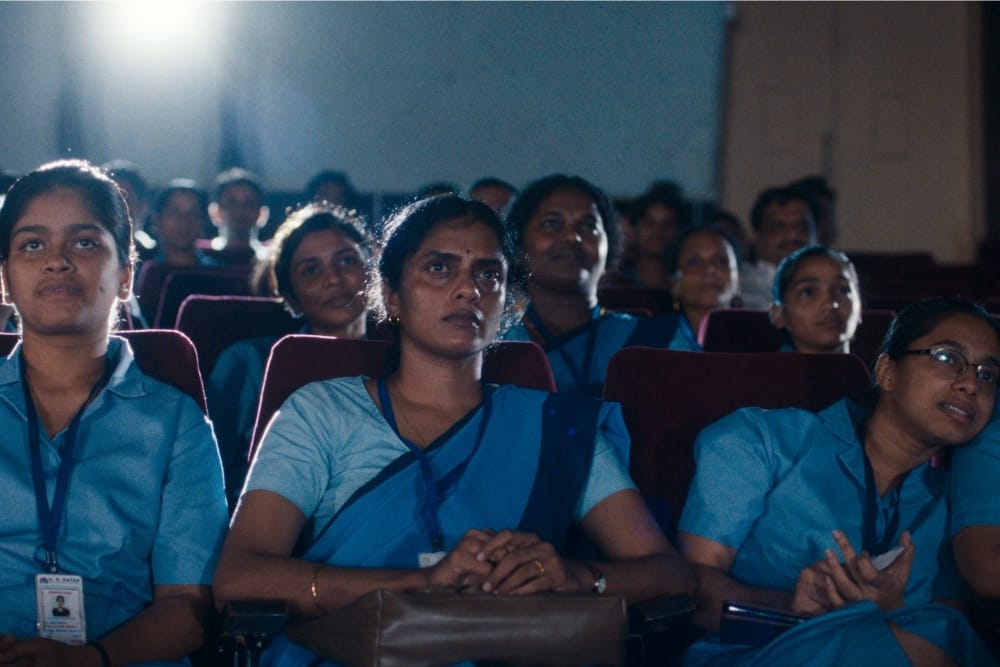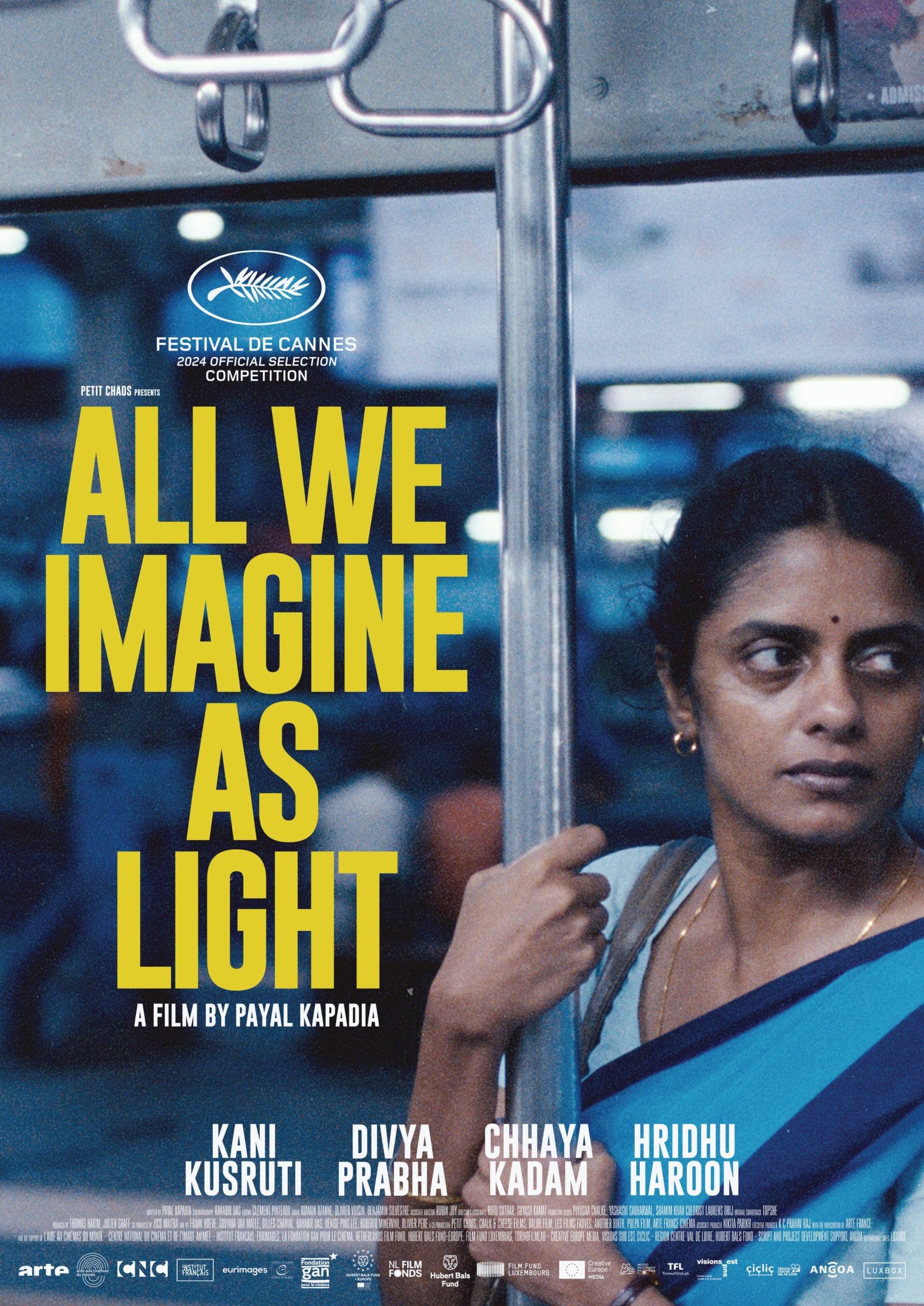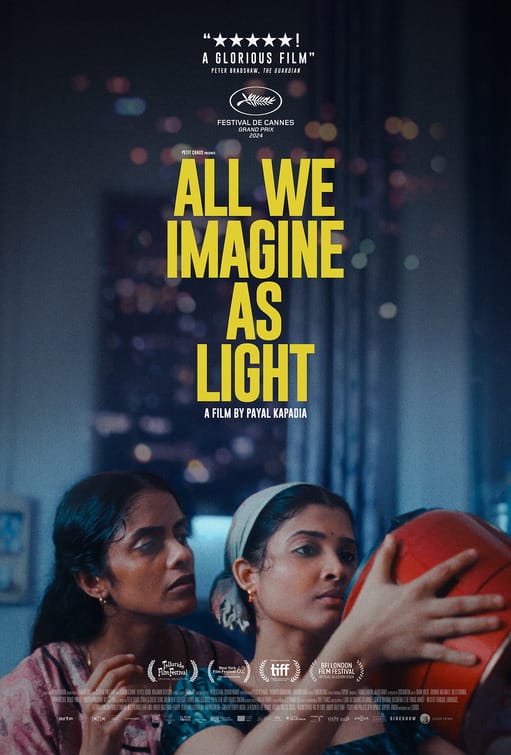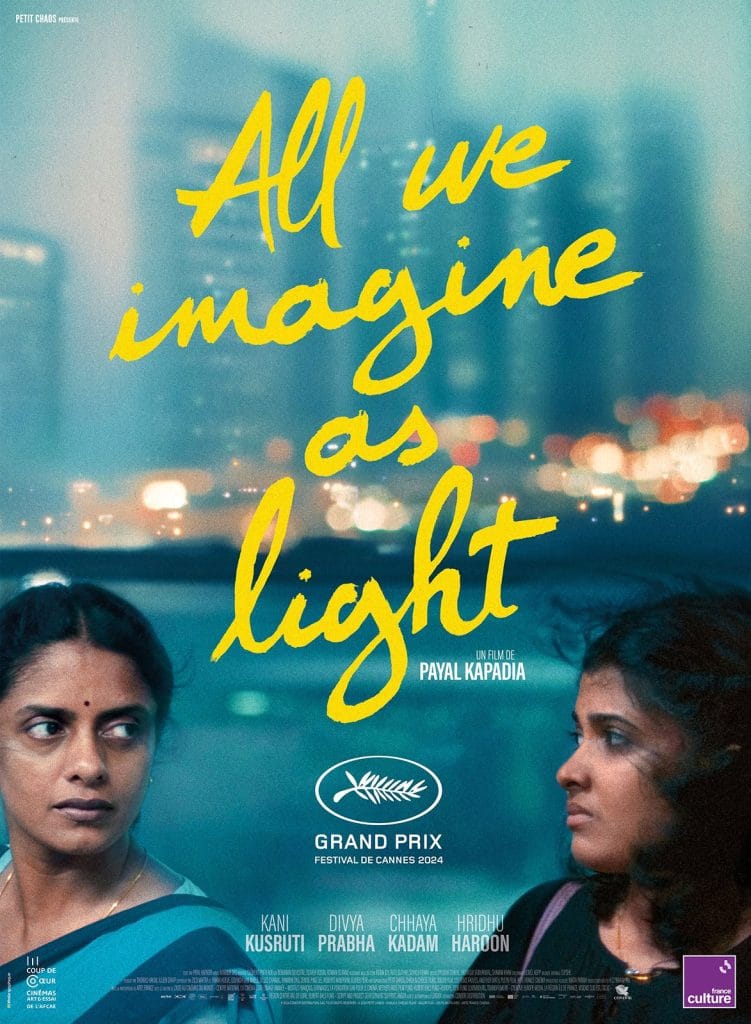Payal Kapadia’s All We Imagine as Light, winner of the 2024 Grand Prix at Cannes, and distributed in the United States by Side Show Films and Janus Films, has had its European and North American premieres before its screening in its home country of India where it is slated for national release in November by Spirit Media. When asked why Kapadia’s film was not selected for the narrative feature from India for the International Oscars this year despite its resounding success at Cannes, Film Federation of India (FFI) chairman Ravi Kottarakara responded that ‘the jury said that they were watching a European film taking place in India, not an Indian film taking place in India.‘
Kottarakara’s comment nevertheless begs the question: what is the center of India? Where are its margins?
India’s selection, Kiran Rao’s Laapataa Ladies, on the other hand, a comedy about mistaken identities set in the fictitious rural Indian village of Nirmal Pradesh has been touted in Indian and international festival circuits as a home-made “crowd-pleaser” with a feel-good and uplifting resolution to its comedy of errors that manages at once to combine both women empowerment as well as rural empowerment.
Kottarakara’s comment nevertheless begs the question: what is the center of India? Where are its margins? If Laapataa Ladies imagines India as a land of timeless villages where modernity slips in silently and bashfully like a veiled bride with mischief and plans, Kapadia’s All We Imagine As Light boldly imagines an India of several intersecting margins: margins of ethnicity, of languages, of class, of gender, of migration, of terrain, of employment, and, the urban and the rural.
It is a study not of opposites, but of complex complements, displaced wholes struggling to complete themselves in any available space they can find in modern India. Mumbai becomes the complex destination matrix of these invisible and variable margins; margins that are easy to miss or to ignore but made painstakingly and enduringly visible in this thoughtful film.
The arc of female friendships
All We Imagine as Light tells the story of three generations of women who sort of know each other in a superficial way at the beginning of the film and come to know each other deeply by the end of the film. The eldest Parvaty, played by the Marathi actor Chaaya Kadam in a performance that meshes grit with perseverance works in the canteen at a local Mumbai hospital, where the thirty-something Prabha, played stoically by Kani Kusruti, and, Anu, played vivaciously by the young actor Divyaprabha work as nurses.
All We Imagine as Light tells the story of three generations of women who sort of know each other in a superficial way at the beginning of the film and come to know each other deeply by the end of the film.
Kani Kusruti and Divyaprabha are both Malayalam actors, as are Azeez Nedumangad who plays the cameo of a doctor from Kerala who tips his heart tentatively to a married Prabha every day, and Hridhoo Haroun, who plays Shiaz, Prabha’s love interest. Together, these four Malayalam actors foreground the theme of internal migration in the film in the characters they represent, particularly, the story of the exodus of Malayali nurses from Kerala to all parts of India and the world itself, a discourse that has developed its own historical resonance in literature and films.
The village life valorised in Laapataa Ladies as a place of burgeoning opportunities is decidedly portrayed as a terrain of precarity in the case of these three women; they have come to Mumbai in search of gainful employment and personal autonomy and freedom.
All We Imagine As Light traces the routines of these women, their secrets and conflicts. Parvaty fights the encroaching developers who want to bulldoze her shack; Anu hides her girlish, budding, bubbly, thrilling rendezvous with her lover Shiaz; and, Prabha floats through life silently: are you married when you haven’t lived with, talked to, seen, or touched your spouse for years? What is the meaning of such virginal chastity?
She disapproves of Anu’s furtive trysts with Shiaz while pining for her absent spouse. These are exceedingly interesting characters each with their own distinct character arcs that meet each other in a profoundly satisfactory manner by the end of the film.
Blue is the color of human warmth in All We Imagine As Light
All We Imagine As Light highlights the precarity of life lived on the margins without sentimentality or anger. In this sense, All We Imagine As Light is a very “Indian” film while being an ode to every teeming metropolis anywhere in the world. The opening montage of the film captures the lifeline of Mumbai, the commuter train, where the scenes fly by to the sounds of overheard bits of conversations in a multitude of Indian languages. This is the place where everyone arrives at last, crisscrossing each other like so many comets in the dark that leave no trace and vanish into the night.
The montage stops with a close-up of nurse Prabha dressed in her blue nurse uniform sari and bathed in the blue glow of the platform tube lights. Gorgeously shot in digital camera by Kapadia’s partner and photographer Ranabir Das, who also co-produced the film, All We Imagine As Light captures the “look” of Mumbai, particularly, its wet monsoon days and nights. The entire first half of the film is shot in near darkness, where a sort of blue pallor covers everything, from the hospital blue of the nurse’s uniforms to the blue tarps covering the monsoon drenched city. There are monumental shots of Mumbai at night, big and little flares of lights breaking the darkness seen through dingy flat windows, on commercial billboards, in street fires, and the headlights and rear-lights of the endlessly snaking Mumbai traffic.
There are monumental shots of Mumbai at night, big and little flares of lights breaking the darkness seen through dingy flat windows, on commercial billboards, in street fires, and the headlights and rear-lights of the endlessly snaking Mumbai traffic.
Often, the film is simply a wonder to look at. Similarly, the sound design by Romain Ozanne is also superb: the sound of rain on different surfaces, the tinny textures, the quiet patter, the splish, splash and splosh of alleyways and gardens.
The unrelenting darkness of All We Imagine As Light, at times, makes the first half of the film feel claustrophobic, fatiguing and tiresome, especially with the camera so close to the characters that we become part of the character’s habitat and we sense the weight of their routines in a lightless city. We learn their secrets, almost voyeuristically, but not quite.
The generation gap between Anu and Prabha, and the conflict it genders is concretely shown in the scene where Anu takes off her work clothes in front of Prabha in a totally unselfconscious manner and we see a glimpse of Anu’s bare chest. Prabha’s confusion is evident as she turns her face away modestly. But Kapadia makes these tiny encounters between the three women occasions for self-reflection which lends their relationships a certain human warmth.
The scene in All We Imagine As Light where Prabha helps Parvaty search for proof of ownership of her shack, or the scene where Parvaty encourages Prabha to throw a stone at the builder’s billboard, or the scene where Anu gives free contraceptive pills to a timid mother in her third pregnancy and unable to say “no” to her husband guide our attention to how women help other women across generations.
Women and solitude
The second half of All We Imagine As Light set in the Konkan coast of Ratnagiri, Maharashtra, Parvaty’s village and home, feels like day to Mumbai’s night. There is light here, lots of it. It reveals the yellow beach sand, the red rock-faces, the green woods, and the grey blue waters of the Arabian sea. In Ratnagiri, the women unravel their tightly corseted lives. It is almost as if it is not the suffering itself that is the problem, but the space to unravel the layers of suffering.
Ratnagiri is that precarious space but shown without the stereotypical urban-rural contrast. There is a touch of melodrama in this section as it pertains to the three women and their secrets. Kapadia’s earlier film A Night of Knowing Nothing (2021) which recounted the protest between the central government and the students at the Film and Television Institute, Pune (FTII), had experimented with non-realistic narrative elements, abstract visuals, and distorted lighting reminiscent of avant-garde cinema.
The Ratnagiri scenes have an avant-garde texture, especially in Prabha’s relationship with a drowned stranger rescued by the fisher folk.
The Ratnagiri scenes have an avant-garde texture, especially in Prabha’s relationship with a drowned stranger rescued by the fisher folk. Though the abstract nature of this relationship feels anterior to the diegetic realism of the film, it also explores the very margins between reality and imagination, and truth and desire, and thus becomes a marker of Prabha’s difference.
The film’s resolution with Prabha asking Anu to bring Shiaz to them, and with the four of them sitting together talking at the little beach cafe under a night sky illuminated by the dim lights of the cafe streamers conveys a sense of comfort and satisfaction. In this scene, we understand that the friendship between women very often spring from fearlessly respecting and embracing the solitude of the other woman, the margins, and giving her the comfort of your presence, like an aspect of nature, perhaps, without demands, should she need it.
There is a certain power in women who claim their solitude. Shiaz, the only male character of any relevance in All We Imagine As Light thus becomes an ally to the three women because he understands it.







